The Capayanes were an indigenous people, now extinct, that lived in Argentine territory.
The Capayanes were an indigenous people, now extinct, that lived in Argentine territory.
Their geographical area was parts of the Argentine provinces of La Rioja, Catamarca, San Juan, from the mountainous zone comprising the limit of La Rioja with Catamarca on the Colorado River and the environs of the Jáchal river-Zanjón, in San Juan, including the Andes on the west, up to the Velasco ranges, where they were mixed with the Diaguitas. They occupied the fertile valleys of Famatina, Sanagasta, Yacampis, Guandacol and Jáchal. They had as neighbors in the northern part the Diaguitas and in the southern part the Huarpes.
They shared with the diaguitas or paziocas the Kakán language , or a derivation of it. Vestiges of their language are in word endings as bis, pebble or small stone, for example: Yacampis, Quilmebis, Guanchina, etc.
The Capayán had spinning technology, and spun the wool of guanaco and llamas. They also knew copper and gold metallurgy. They built canals and irrigation ditches to water their farmlands. Their cultivars were maize pumpkin, potato and quinoa. They used ceramics widely, principally in the production of funeral urns, decorated geometrically with the colors black, red and white, known as Sanagasta style or Angualasto style.
Their houses were of mud and adobe and were sometimes built at the foot of a great tree used as a roof. This technology of construction still lasts in the Riojan zone of Vinchina.
About 1480, the Inca invaded the region of the Diaguitas and Capayanes, incorporating their territories into the Inca Empire (Tawantinsuyu). From 1607, the Spanish conquest resulted in their dispersion and later extinction at the end of the 18th century. The Capayanes took part in an uprising in 1632 together with the Olongastas and other Diaguitas.
Today a department of Catamarca takes their name (See Capayán Department).
The etymology of the name started to this people seems to be the runa simi (quechua) word Kapak ñan (Great road), that is to say the so-called "Inca Highway". The explanation for this would be in that the territory that they were living age sedates of a knot of communications very importantly in the south of the Tawantinsuyu. The majority of the authors consider the capayán due to the cultural common features (for example the use of the language kakán) as one of the parts of the pazioca ("diaguitas"), the same as the calchaquíes, olongastas, quilmes, though they would have differed because of the genetic and cultural influence of their neighboring huarpes and after 1480 for the presence of Mitmakuna persons deported to this region by the Incas. Many of such mitimaes would have traded and manufactured "chicha", an alcoholic maize drink, and churumata.

The Inca road system was the most extensive and advanced transportation system in pre-Columbian South America. It was about 40,000 kilometres (25,000 mi) long. The construction of the roads required a large expenditure of time and effort.
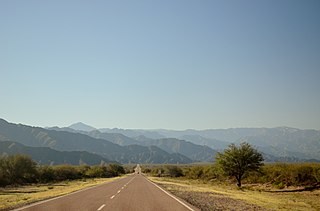
Catamarca is a province of Argentina, located in the northwest of the country. The province had a population of 429,556 as per the 2022 census [INDEC], and covers an area of 102,602 km2. Its literacy rate is 95.5%. Neighbouring provinces are : Salta, Tucumán, Santiago del Estero, Córdoba, and La Rioja. To the west it borders the country of Chile.
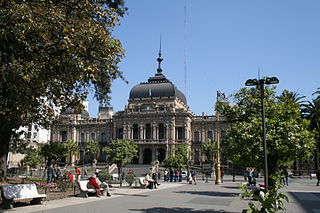
Tucumán is the most densely populated, and the second-smallest by land area, of the provinces of Argentina.
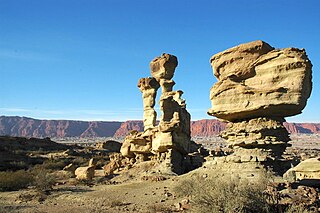
San Juan Province is a province of Argentina, located in the western part of the country. Neighbouring provinces are, moving clockwise from the north, La Rioja, San Luis and Mendoza. It borders with Chile to the west.
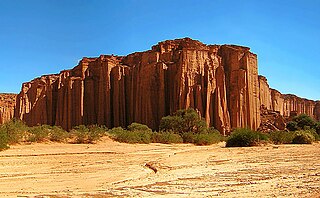
La Rioja is a province of Argentina located in the west of the country. The landscape of the province consist of a series of arid to semi-arid mountain ranges and agricultural valleys in between. It is in one of these valleys that the capital of the province, the city of la La Rioja, lies. Neighboring provinces are from the north clockwise Catamarca, Córdoba, San Luis and San Juan. The dinosaur Riojasaurus is named after the province.

The Diaguita people are a group of South American indigenous people native to the Chilean Norte Chico and the Argentine Northwest. Western or Chilean Diaguitas lived mainly in the Transverse Valleys that incise semi-arid mountains. Eastern or Argentine Diaguitas lived in the provinces of La Rioja and Catamarca and part of the provinces of Salta, San Juan and Tucumán. The term Diaguita was first applied to peoples and archaeological cultures by Ricardo E. Latcham in the early 20th century.

Ischigualasto Provincial Park, also called Valle de la Luna, due to its moon like appearance, is a provincial protected area in the north-east of San Juan Province, north-western Argentina, limiting to the north with the Talampaya National Park, in La Rioja Province. Both areas belong to the same geological formation, the Ischigualasto Formation . Established on 3 November 1971, the park has an area of 60,370 ha.
LRA Radio Nacional, also known as Radio Nacional Argentina, is the Argentine national radio station, and part of the national public media system. It started transmitting in 1937 as LRA Radio del Estado and changed its name to the current one in 1957. Since 1949, National Radio is also in charge of the Radiodifusión Argentina al Exterior, an international service that broadcasts in numerous languages.
Pedro Chamijo, more commonly known as Pedro Bohórquez or Inca Hualpa, was a Spanish adventurer in the Viceroyalty of Peru. He was probably born in Spain, but some sources say he was born in Quito. After trying to make his fortune in various schemes in Peru, around 1656 he had himself crowned Inca (emperor) of the Calchaquíes Indians, fooling not only the Indians but also Spanish government and clerical officials. His almost legendary story is an example of the picaresque, with a tragic ending.

El Quisco is a Chilean city and commune in San Antonio Province, Valparaíso Region. Located in the country's central coast, it serves as a popular summer resort for the population of Santiago and forms part of the Coast of Poets, a cultural space named after four world-renowned Chilean poets: Pablo Neruda, Vicente Huidobro, Violeta Parra and Nicanor Parra. El Quisco is home to La Casa de Isla Negra, the former house of Chilean poet Pablo Neruda, which is now a museum and Neruda's burial site.

Caucete is a department in the eastern part of the San Juan Province of Argentina, which is predominantly a landscape of mountains, and many plantations. It contains the popular Shrine of the Difunta Correa.

Argentina has 35 indigenous people groups officially recognized by the national government. As of the 2022 census [INDEC], some 1,306,730 Argentines self-identify as indigenous or first-generation descendants of indigenous peoples.
Cacán is an extinct language that was spoken by the Diaguita and Calchaquí tribes in northern Argentina and Chile. It became extinct during the late 17th century or early 18th century. The language was documented by the Jesuit Alonso de Bárcena, but the manuscript is lost. Genetic affiliation of the language remains unclear, and due to the extremely limited number of known words, it has not been possible to conclusively link it to any existing language family.
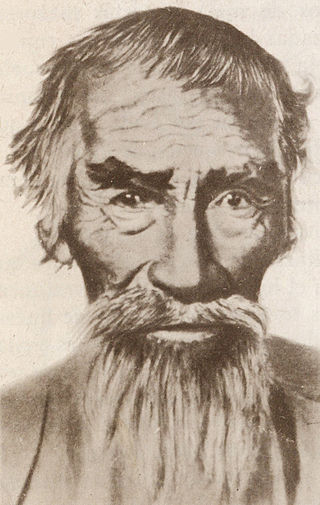
The Huarpes or Warpes are an indigenous people of Argentina, living in the Cuyo region. Some scholars assume that in the Huarpe language, this word means "sandy ground," but according to Arte y Vocabulario de la lengua general del Reino de Chile, written by Andrés Febrés in Lima in 1765, the word Cuyo comes from Araucanian cuyum puulli, meaning "sandy land" or "desert country".
The Calchaquí or Kalchakí were a tribe of South American Indians of the Diaguita group, now extinct, who formerly occupied northern Argentina. Stone and other remains prove them to have reached a high degree of civilization. Under the leadership of Juan Calchaquí they offered a vigorous resistance to the first Spanish colonists coming from Chile.

Huarpe (Warpe) was a small language family of central Argentina that consisted of two closely related languages. They are traditionally considered dialects, and include Allentiac and Millcayac (Milykayak). A third, Puntano of San Luis, was not documented before the languages became extinct.
Martín Yanzón was an Argentine soldier and caudillo who died fighting against the supporters of the dictator Juan Manuel de Rosas.

Inca rule in Chile was brief, it lasted from the 1470s to the 1530s when the Inca Empire was absorbed by Spain. The main settlements of the Inca Empire in Chile lay along the Aconcagua, Mapocho and Maipo rivers. Quillota in Aconcagua Valley was likely the Incas' foremost settlement. The bulk of the people conquered by the Incas in Central Chile were Diaguitas and part of the Promaucae. Incas appear to have distinguished between a "province of Chile" and a "province of Copayapo" neighboring it to the north. In Aconcagua Valley the Incas settled people from the areas of Arequipa and possibly also the Lake Titicaca.

Villa San Agustín,San Agustín de Valle Fértil or San Agustín is the capital city, center of institutional activities and governmental authorities of the department of Valle Fértil. It is located in the center of the administrative unit, 250 km northeast of the city of San Juan and in the center of the province, in Argentina.

Yacampis was the name that colonial records from the mid-16th century give to Cacán-speaking indigenous groups that inhabited the Valle Fértil region and the Río Bermejo valley in north-west from Argentina. These peoples were recognized with the ethnonym yacampis, being used by the colonial administration to refer to an indigenous group differentiated as a southern part of the large Diaguita or Pazioca nation that inhabited the province of La Rioja and the northeast of San Juan, until its abandonment. as categories of ethnic recognition in the eighteenth and nineteenth centuries. However, it is not known if this name was the one by which they recognized each other as a group, or if they had a name that identified them. This ethnic name would originate from a family clan that colonial officials registered to identify various groups, related or not, that they found inhabiting the region.